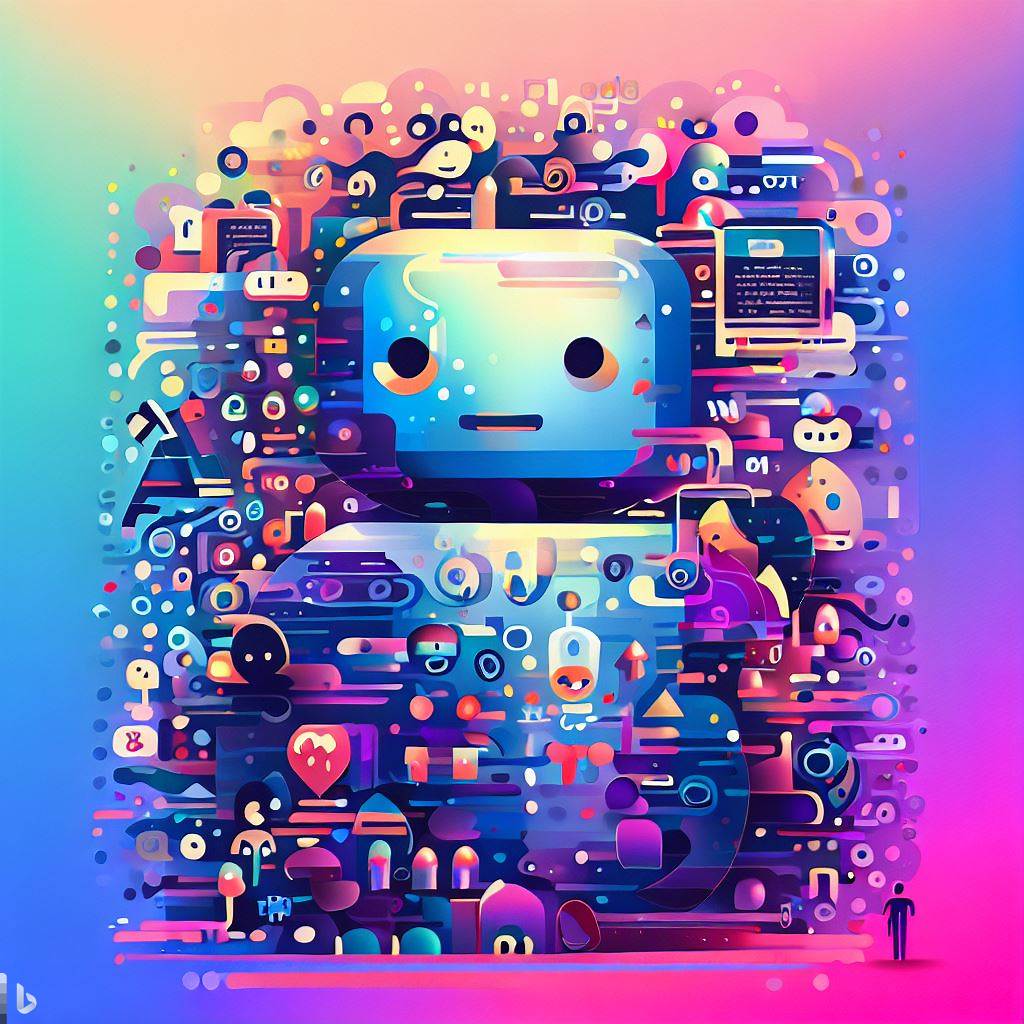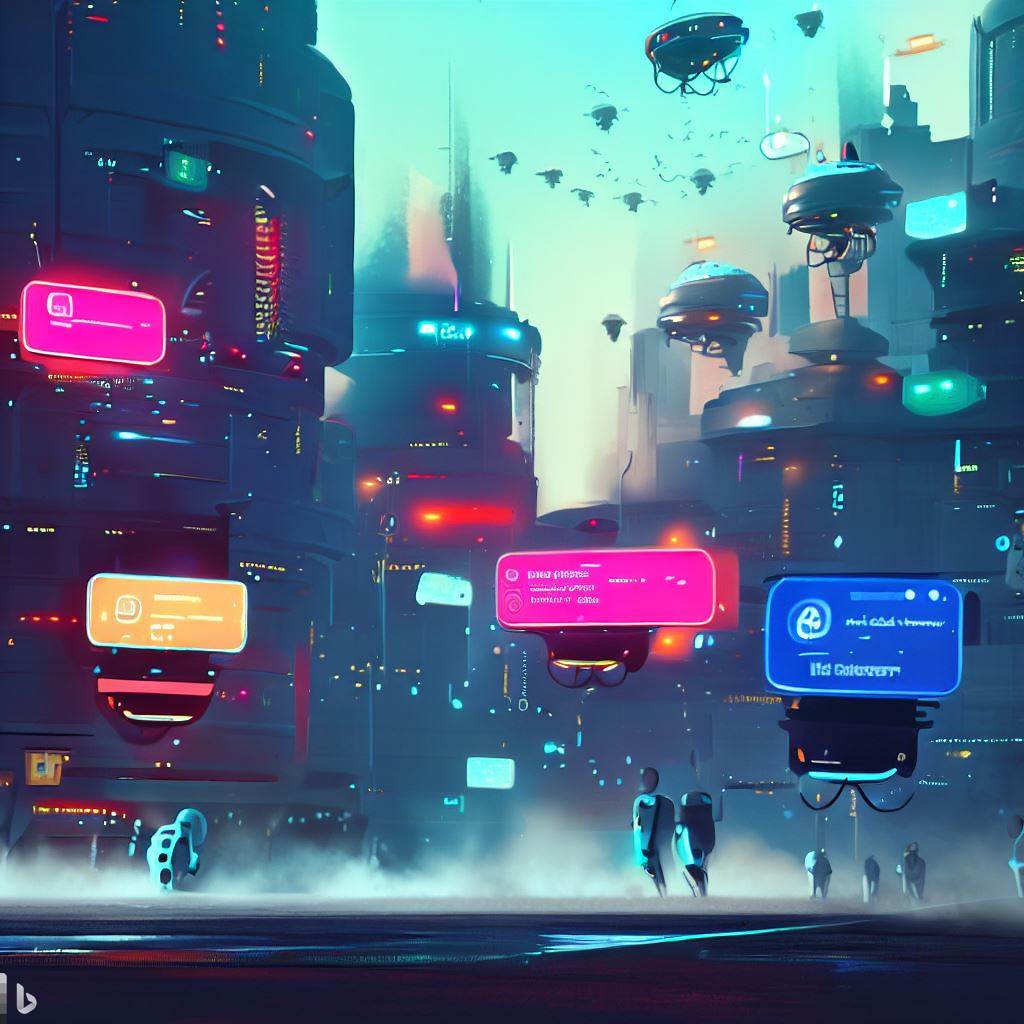Introduction

In today’s digital landscape, chatbots have become integral components of various industries, finding utility in sectors ranging from customer service and healthcare to entertainment. These innovative computer programs simulate lifelike conversations with human users, effortlessly bridging the gap between technology and human interaction through text or voice interfaces. With their growing prominence, it becomes crucial to examine the capabilities of different chatbot solutions, and in this article, we embark on a thorough exploration of ChatGPT, an exceptional language model developed by OpenAI, comparing and contrasting it with other chatbots to determine the true champion.
Overview of ChatGPT and Comparison with Other Chatbots
ChatGPT is a chatbot developed by OpenAI that uses natural language processing (NLP) and machine learning (ML) to generate human-like responses. Compared to other chatbots, ChatGPT has several unique features, including its ability to generate creative responses and adapt to different contexts.
Purpose of the Article
In this comprehensive article, our primary aim is to conduct a thorough and detailed comparison between ChatGPT and other chatbots, shedding light on their distinctive attributes and capabilities. By delving into various key aspects, we will evaluate each chatbot’s strengths and weaknesses in terms of its Natural Language Processing (NLP) and Machine Learning (ML) capabilities, user experience, customer service, security features, use cases, integration and compatibility options, pricing models, market share, research and development endeavors, user feedback, and potential future developments.

1. Features of Chatbots
1.1 Common Features of Chatbots
Most chatbots share common features, such as their ability to recognize and respond to user inputs, store user information, and propose solutions or answers to users.
1.2 Differences in the Features Of Chatbots
However, chatbots differ in their features depending on their intended use case. Some chatbots are designed for specific industries, such as healthcare or finance, while others are more general-purpose. Some chatbots use rule-based approaches to generate responses, while others, like ChatGPT, use AI and ML algorithms to generate more human-like responses.
1.3 Evaluation of Features of ChatGPT and Other Chatbots

Overall, ChatGPT stands out from other chatbots in the realm of artificial intelligence thanks to its remarkable advancements in Natural Language Processing (NLP) and Machine Learning (ML) capabilities. These cutting-edge technologies enable ChatGPT to comprehend and interpret human language in a more sophisticated manner, allowing it to generate responses that are not only accurate but also contextually relevant. By leveraging its robust NLP capabilities, ChatGPT can decipher the meaning behind user queries, taking into account various linguistic elements such as grammar, syntax, semantics, and even subtle contextual cues.
2. Natural Language Processing
2.2 Definition of Natural Language Processing (NLP)
NLP is a branch of AI that focuses on enabling computers to interpret and respond to human language. NLP algorithms can analyze the structure of sentences, identify the parts of speech and meanings of words, and generate responses that sound human-like.
2.3 Importance of NLP in Chatbots

NLP is an essential component of chatbots, as it enables them to understand and respond to user inputs. Without NLP, chatbots would be unable to generate meaningful responses that match the user’s needs.
2.4 NLP Capabilities of ChatGPT vs Other Chatbots
ChatGPT’s NLP capabilities are among the most advanced in the industry, as it can generate human-like responses that adapt to different contexts. Other chatbots vary in their NLP capabilities, with some using rule-based approaches and others using ML algorithms to generate responses.
3. Machine Learning
3.1 Definition of Machine Learning (ML)
ML is a method of AI that enables computer programs to learn from data and improve their performance over time. ML algorithms can analyze patterns in data, make predictions, and generate new insights.
3.2 Importance of ML in Chatbots
ML is important in chatbots, as it enables them to learn from previous interactions with users and improve their responses over time. Without ML, chatbots would be unable to improve their performance and generate more accurate responses.
3.3 ML Capabilities of ChatGPT Other Chatbots
ChatGPT utilizes a state-of-the-art form of machine learning (ML) known as deep learning, which employs complex neural networks to generate remarkably human-like responses. In contrast, many other chatbots employ diverse ML algorithms that span a wide range, starting from simpler decision trees and progressing towards more intricate neural networks that involve multiple layers and connections.

3.4 Comparison of ML Capabilities of ChatGPT and Other Chatbots
Overall, ChatGPT’s Machine Learning (ML) capabilities are widely recognized as being among the most advanced in the industry, setting it apart from other chatbots in terms of its exceptional ability to generate creative responses that not only meet but exceed user expectations, and what truly distinguishes ChatGPT is its remarkable capacity to continuously improve and refine its responses over time, ultimately enhancing the overall user experience and solidifying its position as a leading conversational AI system.
4. User Experience
4.1 Importance of a Good User Experience
A good user experience is essential for chatbots, as it can affect the user’s perception of the chatbot’s usefulness and quality. A well-designed chatbot should be easy to use, intuitive, and responsive to user inputs.
4.2 User Experience of ChatGPT and Other Chatbots
ChatGPT has a user-friendly interface that makes it easy for users to interact with the chatbot. Other chatbots vary in their user experience, with some being more complex and difficult to use.
4.3 Comparison of User Experience of ChatGPT and Other Chatbots
Overall, ChatGPT has a superior user experience compared to other chatbots, due to its user-friendly interface and intuitive design.
5. Customer Service
5.1 Role of Chatbots in Customer Service
Chatbots are becoming increasingly prevalent in the field of customer service, as they are being recognized for their capability to deliver prompt and efficient support to customers. This recognition stems from their ability to handle an extensive array of customer inquiries, addressing a diverse range of concerns and providing practical and valuable solutions that effectively meet the needs of customers. With their well-thought-out design and intelligent algorithms, these chatbots possess the capacity to not only streamline the customer service process but also enhance the overall customer experience by ensuring timely and accurate responses. By leveraging their automated nature, chatbots offer a cost-effective solution that enables businesses to efficiently manage large volumes of customer interactions without compromising on the quality of service.

5.2 The Ability of ChatGPT and Other Chatbots to Provide Customer Service
ChatGPT’s advanced NLP and ML algorithms enable it to provide superior customer service compared to other chatbots. Other chatbots vary in their ability to provide customer service, with some being more suited for specific industries or use cases.
6. Security
6.1 Importance of Security in Chatbots
Security is an important consideration for chatbots, as they may handle sensitive user information, such as personal or financial information. A well-designed chatbot should have strong security features to protect user privacy and prevent unauthorized access.
6.2 Security Features of ChatGPT and Other Chatbots
ChatGPT has robust security features, including encryption and data storage protection. Other chatbots vary in their security features, with some offering more or less security than others.
6.3 Comparison of Security Features of ChatGPT and Other Chatbots
Overall, ChatGPT has strong security features compared to other chatbots, due to its robust encryption and data storage protection.
7. Limitations and Challenges
7.1 Limitations of Chatbots

Chatbots have several limitations, including their inability to handle complex or emotional conversations, their reliance on pre-existing data to generate responses, and their susceptibility to errors or bias.
7.2 Challenges of Chatbots
Chatbots face several challenges, including the need to constantly improve their NLP and ML algorithms, the need to adapt to changing user needs and preferences, and the need to provide accurate and reliable information.
7.3 Evaluation of How ChatGPT and Other Chatbots Handle Limitations and Challenges
ChatGPT has made significant progress in addressing the limitations and challenges facing chatbots, by leveraging advanced NLP and ML algorithms to generate human-like responses that adapt to different contexts.
8. Use Cases
8.1 Use Cases of ChatGPT and Other Chatbots in Different Industries
Chatbots are used in a variety of industries, including healthcare, finance, and entertainment. ChatGPT is particularly well-suited for use in industries that require complex or creative responses, such as marketing or advertising.
8.2 Comparison of Use Cases of ChatGPT and Other Chatbots
Overall, ChatGPT is well-suited for use in a wide range of industries, due to its advanced NLP and ML capabilities that enable it to generate creative and context-sensitive responses.
9. Integration and Compatibility
9.1 Integration and Compatibility of ChatGPT and Other Chatbots with Different Platforms or Technologies
Chatbots need to be compatible with different platforms and technologies to be effective. ChatGPT is designed to work with a wide range of platforms and technologies, making it a versatile choice for businesses and organizations.
Comparison of ChatGPT and Other Chatbots
Overall, ChatGPT offers superior integration and compatibility compared to other chatbots, due to its versatility and flexibility.

10. Pricing
10.1 Pricing Models of ChatGPT and Other Chatbots
Chatbots are offered through a variety of pricing models, including subscription-based or pay-per-use pricing. ChatGPT is offered through a pay-per-use pricing model, which can be more cost effective for businesses that require occasional use of chatbot services
10.2 Comparison of Pricing Models of ChatGPT and Other Chatbots
Overall, ChatGPT offers a flexible and cost-effective pricing model compared to other chatbots, due to its pay-per-use pricing model.
12. Research and Development
12.1 Research and Development Efforts of ChatGPT and Other Chatbots
Chatbots are rapidly evolving, with new NLP and ML algorithms being developed all the time. ChatGPT has a dedicated team of researchers and developers working to improve its performance and functionality.
12.2 Comparison of the Research and Development Efforts of ChatGPT and Other Chatbots
With an unwavering dedication to research and development, ChatGPT has firmly established itself as a pioneering chatbot, pushing the boundaries of performance and functionality. It stands at the forefront of conversational AI, continually striving to deliver innovative solutions and enhanced user experiences.
13. User Feedback
13.1 User Feedback about ChatGPT and Other Chatbots
User feedback is an important consideration when evaluating chatbots, as it provides insights into user satisfaction and areas for improvement. ChatGPT has received positive feedback from users, with many praising its ability to generate creative and engaging responses.
13.2 Comparison of User Feedback about ChatGPT and Other Chatbots
Overall, ChatGPT has received positive user feedback compared to other chatbots, indicating that it is a well-designed and effective chatbot
14. Future of Chatbots

The future of chatbots is bright, as advancements in NLP and ML algorithms are enabling chatbots to become more sophisticated and effective. In the future, chatbots may become even more human-like, capable of engaging in complex and emotional conversations with users.
ChatGPT and other chatbots have significant possibilities for the future, including their use in new industries and applications. As NLP and ML algorithms continue to improve, chatbots may become more ubiquitous and essential in our daily lives.
15. Benefits of ChatGPT
15.1 Unique Benefits of ChatGPT over Other Chatbots
ChatGPT offers several unique benefits over other chatbots, including its ability to generate creative and engaging responses that adapt to different contexts, its advanced NLP and ML capabilities, and its user-friendly interface.
15.2 Comparison of Benefits of ChatGPT and Other Chatbots
One of the key advantages of ChatGPT lies in its exceptional language understanding capabilities. It has been trained on an extensive corpus of text data, enabling it to comprehend a wide range of topics and respond to diverse queries with a remarkable degree of accuracy. Whether you seek information, engage in casual conversation, or require assistance, ChatGPT’s ability to grasp the nuances of human language allows for a highly interactive and natural interaction.
Additionally, ChatGPT boasts a vast knowledge base derived from its training on a diverse array of texts. It possesses information spanning various domains, including science, history, literature, technology, and more. Consequently, ChatGPT can provide insightful and informative responses to an extensive range of questions, making it an invaluable tool for users seeking knowledge and understanding.
Moreover, ChatGPT’s adaptability and flexibility make it a preferred choice among chatbot options. It can accommodate different conversational styles, adapting its tone and manner to suit the user’s preferences. Whether you prefer a formal tone, a casual conversation, or anything in between, ChatGPT can adjust its responses accordingly, enhancing the user experience and fostering a sense of personalized interaction.
While ChatGPT undoubtedly showcases numerous strengths, it is important to acknowledge its minor drawbacks. Occasionally, the model may generate responses that are slightly inaccurate, incomplete, or nonsensical. However, it is crucial to remember that these instances are infrequent and do not significantly detract from the overall performance of ChatGPT.
Is ChatGPT the Best Chatbot?
ChatGPT is among the best chatbots on the market, due to its advanced NLP and ML capabilities, user-friendly interface, and ability to generate creative and engaging responses. While other chatbots may have unique features or benefits, ChatGPT excels in all the key areas that matter most to users
FAQ
Frequently Asked Questions about ChatGPT and Other Chatbots
Chatbots are used in a wide range of industries, including healthcare, finance, and entertainment.
ChatGPT is offered through a pay-per-use pricing model.
Chatbots are constantly evolving and improving to address the limitations and challenges facing them, through the use of advanced NLP and ML algorithms.
Conclusion
In conclusion, ChatGPT is one of the best chatbots on the market, due to its advanced NLP and ML capabilities, user-friendly interface, and ability to generate creative and engaging responses. While other chatbots may have unique features or benefits, ChatGPT remains a superior choice for businesses and organizations looking to improve their customer service and reduce costs. We recommend ChatGPT to anyone looking for a high-quality and effective chatbot solution.








